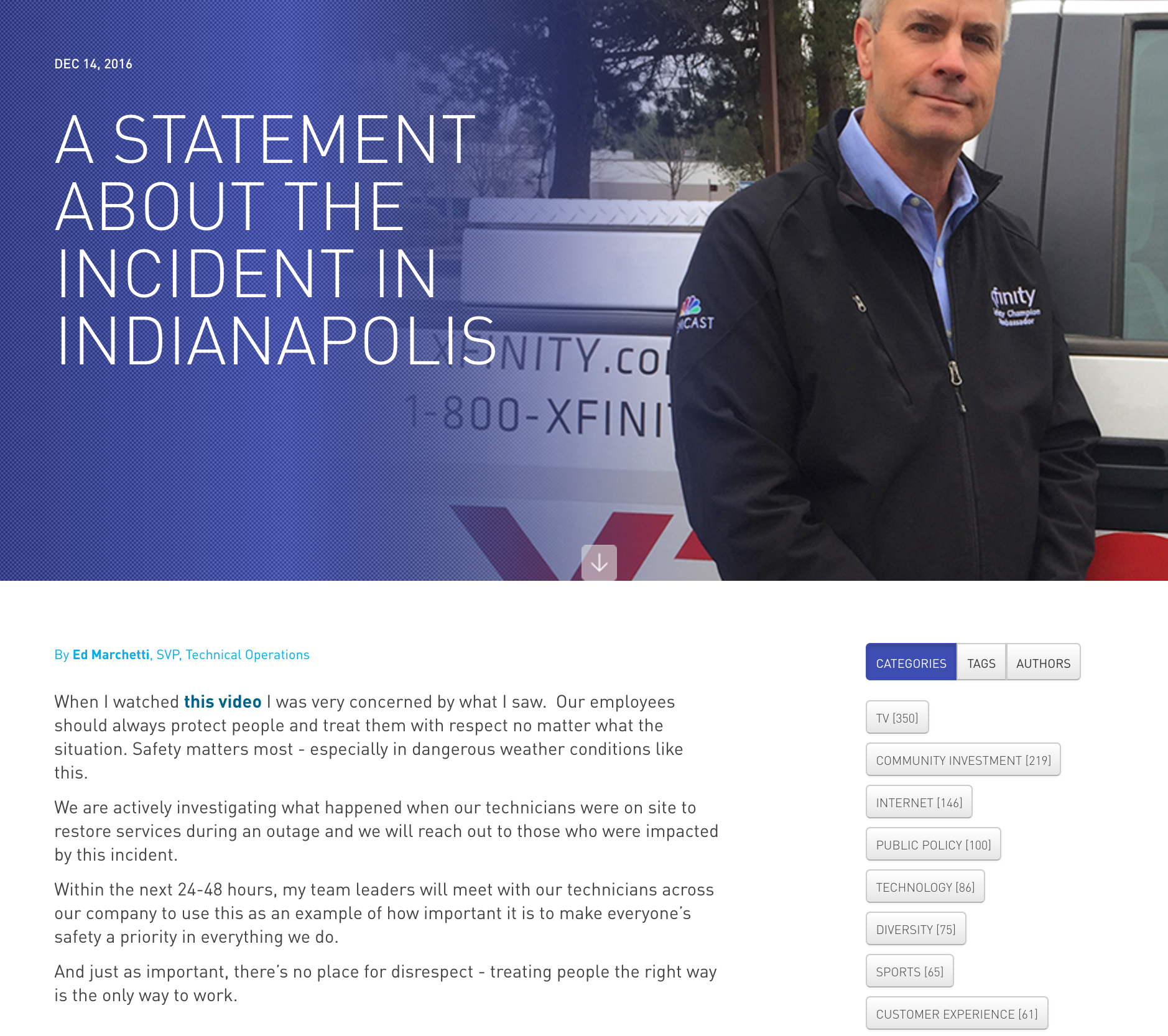Touchpoint Performance That Drives (or Wrecks) Customer Experience
/Customer experience is not what you market. It’s not the words in your vision statement. It’s what happens when your workforce interacts with customers in the field every day.
Case in point: On December 13, 2016, a video was posted on YouTube® by an eyewitness of multiple vehicle accidents in proximity to an Internet Provider Company crew repairing a cable outage along a snowy rural street outside Indianapolis.
Any online search will provide an avalanche of articles and videos ranging from the local ABC affiliate’s coverage to the Huffington Post’s take on the video. In the 48 hours that followed the YouTube post, the video had over three million views and over ten thousand comments. In an effort to serve his viewers better (the viewers of the video), the YouTube creator of the video later added an update addressing questions about the incident and clarifying details.
Although hundreds of viewers of the video posted comments about what they saw and thought about the video, what really happened on West Morris Street? What did this video do for this company’s image? What will people do or think differently as a result of seeing this video? What will the people involved in the actual incident do or think differently as a result of being involved?
The Optics of Customer Experience
Let’s step back and look at this from a customer experience perspective. The day after the video was posted, Comcast published a statement on their corporate blog from Ed Marchetti, Comcast’s SVP of Technical Operations. The statement concludes with, “...there’s no place for disrespect - treating people the right way is the only way to work.” But what is the right way?
In the context of customer experience, the right way is any practice, system or process when serving customers that leaves the customer with the desired emotional response. How an organization achieves those customer experience outcomes is a product of how it chooses to improve performance and service across all customer touchpoints, no matter where or when they occur.
Learning From In-The-Field Examples
Where are the opportunities for improvement in this case? What can be learned from this incident and the fallout as a result of its being posted? Take a moment to use the example and examine how your organization would perform under similar conditions, regardless of your industry.
- What limitations are you placing on your workforce regarding interactions with customers in the field?
- How empowered is your workforce with the latitude to adapt to quickly changing customer situations?
- What tools have you provided your workforce outside of normal policies and procedures to adapt and serve customers better?
- What types of guidance, training or other resources are your competitors providing their workforce to serve customers better and adapt on the fly?
- What are you doing to educate your employees in advance to reduce risk and manage customer expectations better?
- What types of monitoring are you conducting in the field to help improve customer service and workforce behaviors?
Start a dialogue about customer experience based on these considerations. As unfortunate as this event was, there are always lessons to be learned from losses. Use it to evolve your customer experience initiatives and help your workforce perform at their best…at every customer touchpoint.











